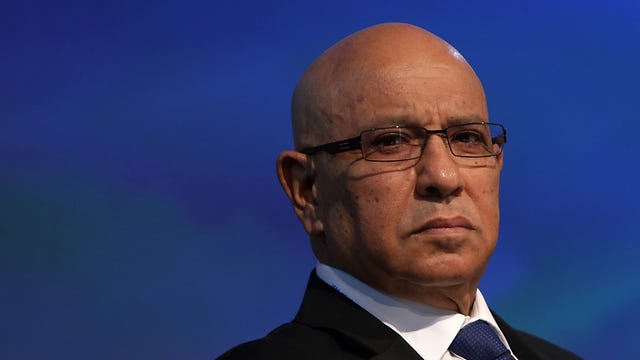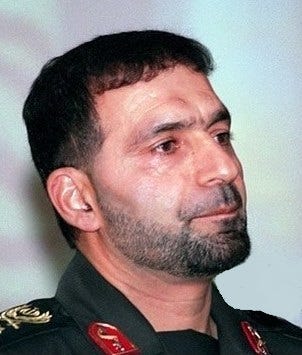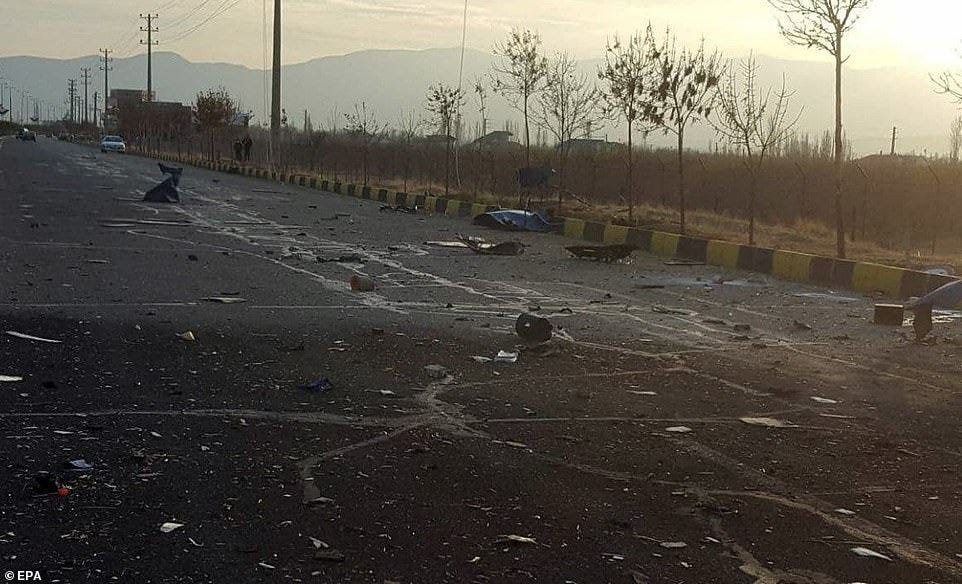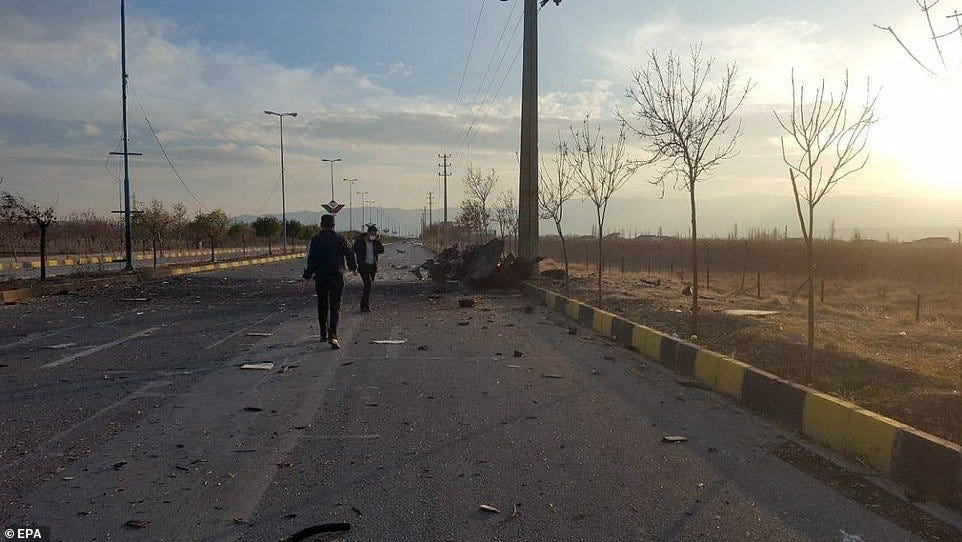Iranian scientists & assassinations
Mossad has allegedly assassinated at least 6 scientists, including Mohsen Fakhrizadeh, and one Brigadier General involved with Iran's nuclear weapons and missile programmes.
Given the evolving nature of the information available about this incident, this post will be short and speculative.
Kill the driver
Meir Dagan headed Mossad from 2002 to 2010.
In 2003, Ariel Sharon tasked Meir Dagan, then head of Mossad, with disrupting the Iranian nuclear weapons project. Dagan initiated a five-pronged approach: diplomatic pressure, sanctions, aid to opposition groups in Iran, interdiction of equipment and raw material, and the final prong that he believed that the most effective — targeting Iran's scientists.
In a car there are 25,000 parts on average. Imagine if one hundred of them are missing. It would be very hard to make it go. On the other hand, sometimes it’s most effective to kill the driver, and that’s that.
—Meir Dagan
Unlikely allies
He tasked teams in Mossad with identifying and locating key scientists developing Iran's nuclear weapons or missiles. He also decided to grow and leverage relations with a host of unlikely allies—Arab states in the Gulf who were threatened by the prospect of a nuclear Iran just as much as Israel was. Predictably, there was pushback from within the organisation, and Dagan crushed it:
I told them to stop talking crap—let's accumulate our own assets, blue and white, in order to do business with other intelligence agencies. I decided that anything that did not endanger ourselves or our sources could be traded, or otherwise no one would take us seriously.
The collaboration began yielding results. These states had better HUMINT networks in Iran, and the intelligence received from them helped Mossad improve its understanding of the Iranian nuclear weapons project.
Stuxnet
Iranian efforts at their uranium enrichment facility in Natanz were sabotaged through Stuxnet. The worm caused infected Iranian centrifuges to spin faster, up from 1,064 Hz to 1,410 Hz, for 15 minutes before returning to normal operating parameters. A few days later, it caused the centrifuges to spin at drastically lower speeds for 50 minutes. The stress of these variations on the aluminium tubes caused them to warp just enough to force parts into contact with each other, resulting in the destruction of the centrifuges. Upwards of 1,000 centrifuges were damaged, and the operational capacity of the facility dropped over 30% between November 2009 and January 2010. Stuxnet was by no means the first or last such effort.
The 100,000 sq. m. Hardened Fuel Enrichment Plant at Natanz is built 8m underground, with a roof hardened with reinforced concrete. Above: Anti-aircraft guns guarding the facility.
Fifteen scientists
In parallel, and leveraging intelligence received from Gulf states, Mossad identified fifteen such scientists who were believed to be critical to the Iranian effort. A firm believer in targeted killings, Dagan is believed to have ordered their assassination. But the Mossad still faced a challenge: they did not have sufficient assets in-country to achieve what was needed.
Preferring to use proxies to do the wet work, he reversed a long-standing policy where targeted killings would only be executed by own personnel:
I'm prepared to cry over the coffin of any such agent or proxy who dies and returns his soul. Believe me, I would shed real tears over him. But I also prefer to see them dead than my operatives dead.
The changes he had initiated began to show results. Between 2003 and 2011 Mossad, through proxies or directly, are believed to have assassinated six of the fifteen scientists identified. Along the way they also bumped off a General of the Iranian Revolutionary Guards Corps (IRGC).
The operations were the responsibility of a group called Kidon ('bayonet' or 'tip of the spear'). Kidon is part of the Caesarea branch of Mossad and is believed to only recruit veterans from IDF special forces units.
The unlucky ones
Among those eliminated was Dr Ardeshir Hosseinpour who died under mysterious circumstances on 14 January 2007. The authorities claimed asphyxiation resulting from a gas leak, but Iranian intelligence believe it was Mossad. Masoud Alimohammadi died when a motorcycle next to his parked car exploded as he opened the door on the morning of 12 January 2010.
Brigadier General Hassan Tehrani Moghaddam founded Iran's long-range missile program and was involved in designing multiple missiles. On 12 November 2011, the arsenal at the Alghadir missile base exploded. Among the seventeen members of the Iranian army and the IRGC was General Moghaddam. Although Iran officially denied foul play, western intelligence and sources close to the regime believe the blast was the handiwork of Mossad.
Brigadier General Hassan Tehrani Moghaddam
Fakhrizadeh
As the bodies began piling up, the Iranians beefed up security for other critical boffins. Such as the chief of the weapons group, the recently deceased Mohsen Fakhrizadeh.
Fakhrizadeh, left
Mohsen Fakhrizadeh was a Brigadier General in the IRGC, a physicist, and headed Project 111 or the Green Salt Project, a alleged secretive Iranian entity focusing on uranium processing, high explosives and a missile warhead design. Western intelligence agencies considered him the Iranian equivalent of Abdul Qadeer Khan, an assessment that might not really be as flattering as it seems [read my novels to find out why]. Benjamin Netanyahu even singled him out in 2018 during a televised presentation, and urged his audience to:
remember his [Fakhrizadeh's] name.
On 27 November 2020, Fakhrizadeh was travelling from Tehran to Absard where he owned a weekend home. His car was accompanied by three armoured cars carrying a security detail, a consequence of the high-profile targeted killings by Kidon. This is where speculation begins because there are multiple accounts of what happened. Some are fantastical.
Official claims
Take Iran's official claim, for example. As the convoy approached Absard, the lead car drove ahead to secure Fakhrizadeh's home. Then, as shots were fired, Fakhrizadeh pulled over thinking that his car was malfunctioning. When he stepped out of the car, he was shot at by a remote-operated machine gun mounted on the back of a Nissan truck parked 150 metres away. As if this wasn't high-tech enough, the truck, its job done and dusted, exploded a few moments later.
Yeah, I don't believe it either.
Fahrizadeh’s car
Eyewitness accounts
Then there are versions pieced together from eyewitness statements and leaked by Iranian journalist Mohamad Ahwaze. After the lead car sped ahead to secure the house before Fakhrizadeh's arrival, the now-three-car convoy approached a roundabout. The lead car passed by a Nissan truck which exploded and took it out. On the other side of the road stood a Hyundai Santa Fe and four motorcycles. A hit squad of twelve people. As soon as the bomb exploded, taking out the lead vehicle, this team opened fire. They had two snipers. With a part of the group pinning down the security detail in the trailing vehicle and another part firing on Fakhrizadeh's car, the leader of the team ran up to Fakhrizadeh's car, dragged him out, and executed him. The hit squad then exfiltrated without a trace.
Purportedly a photograph of the scene
Another version of events says that he was travelling in a three-car convoy, and the Nissan truck took out the trailing car, not the lead car. In this version, the lead car was then pinned down by a part of the hit squad while Fakhrizadeh was dragged out and executed.
Another photograph of the site of the attack showing, possibly, the remains of the Nissan truck.
Assassinations have an effect on morale, as well as a practical effect. I don't think there were many who could have replaced Napoleon, or a president like Roosevelt or a prime minister like Churchill. The personal aspect certainly plays a role. It's true that anyone can be replaced, but there's a difference between a replacement with guts and some lifeless character.
—Meir Dagan
It remains to be seen whether Dagan's words will prove prophetic in the case of Mohsen Fakhrizadeh and his successor.
If you enjoyed reading this story, please share it with your friends, and subscribe to Espionage& for free using the button below to receive new stories in your inbox.
You will also enjoy reading my spy novels: Let Bhutto Eat Grass & Let Bhutto Eat Grass: Part 2 deal with nuclear weapons espionage in 1970s India, Pakistan, and Europe.











